Implant placement: how is it done?
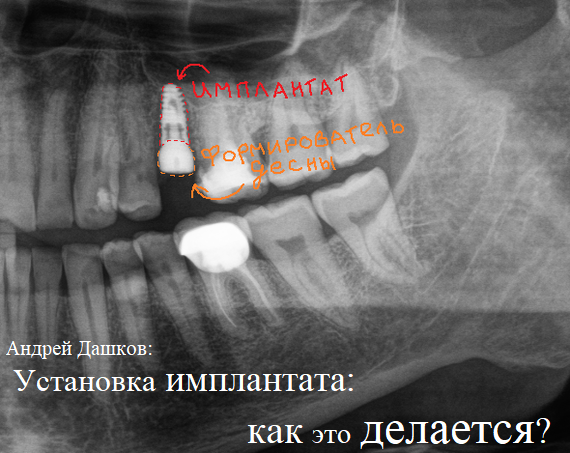
Good afternoon, dear friends! Today I would like to tell you, and most importantly, to show you - how the implant installation operation is going on - with all the tools and other things. If I have already talked about the process of tooth extraction , in particular the wisdom tooth , then it is time to talk about something more serious.
ATTENTION! -Uwaga! -Pažnju! -Attention! -Achtung! -Attenzione! -ATTENTION! -Uwaga! -Pažnju!
Below are the photos taken during the operation! With types of teeth, gums, blood anddismemberment. Faint of heart please refuse to read this article.
Are you still here? Then let's go!
Consultation and examination
In addition to visual inspection:
')

We need an x-ray examination. In this case, a simple OPTG (Panoramic image of the teeth) will not be enough for us. CBCT (Cone Beam Computed Tomography) is required.
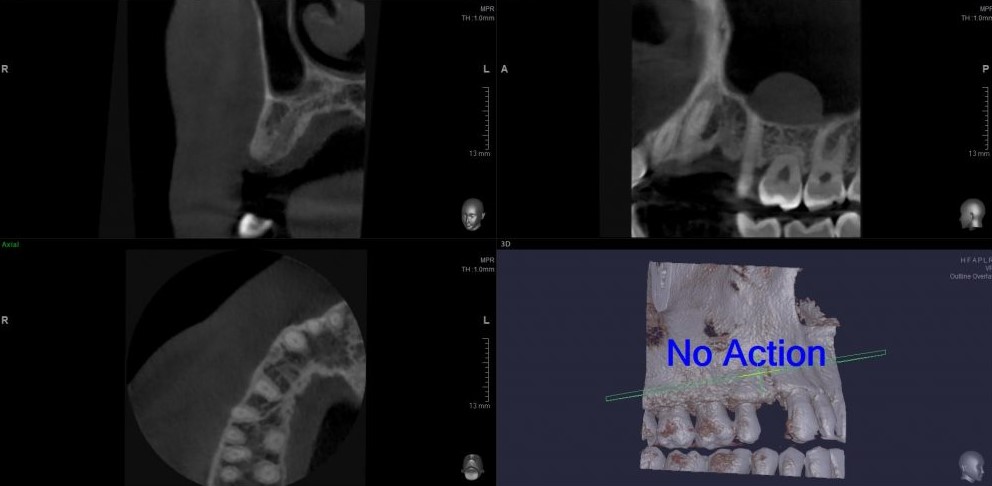
What is the difference?
OPTG (Orthopantomogram) - overview image of the dentition. This snapshot is planar, which means that every detail of the snapshot overlaps each other in layers. Therefore, it is impossible to consider the object of study, in particular the place of the planned implantation, in all planes, at a different angle or other projection.
CBCT (Cone Beam Computed Tomography) - 3D volumetric image, on the contrary gives us this opportunity.

In this case, the volume of bone tissue is sufficient to stabilize the optimally sized implant, and the quality of the gums makes it possible to form an aesthetic contour without additional procedures:
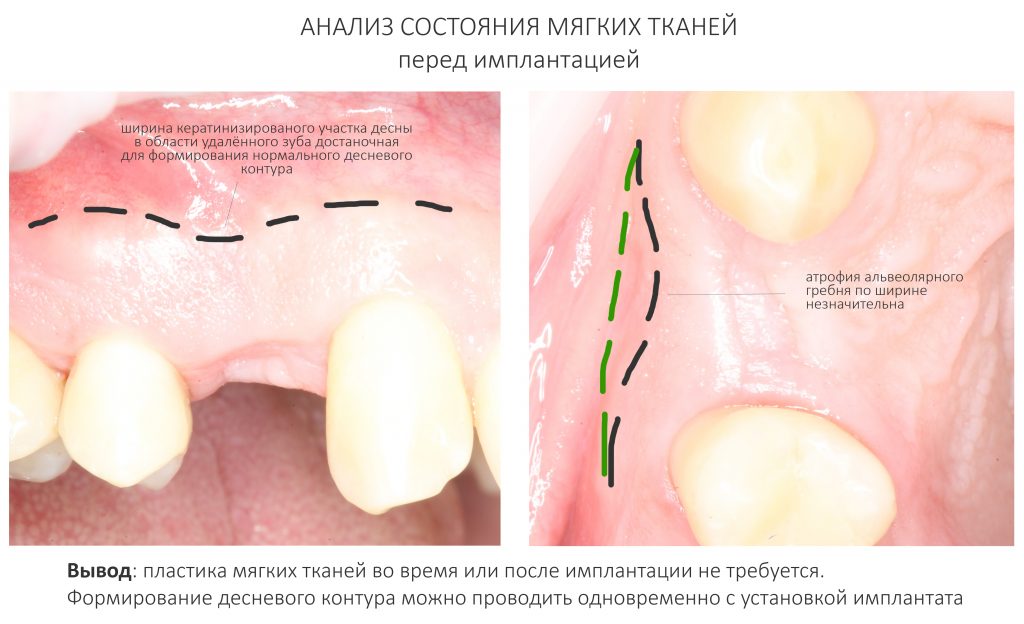
After the necessary examinations, we proceed directly to implantation.
It all begins, of course, with anesthesia. No one wants to howl in pain during an operation, does he?
In order to minimize all unpleasant sensations and the injection of the needle was less painful - the so-called application anesthesia is used .

Next is the infiltration of anesthetic in the area of the planned operation. The photo shows a reusable carpool syringe, which, of course, after each patient is sterilized, like any other tool. Two disposable anesthetic carpules and two needles of different lengths:

How it looks in the mouth:
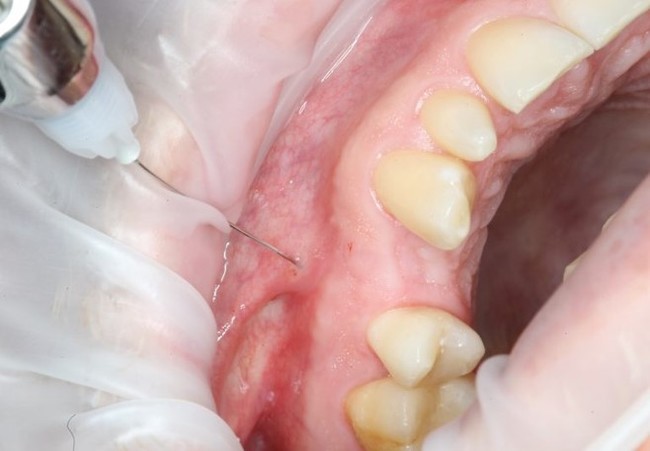
After the anesthesia, using a scalpel is made - a cut , and the so-called raspator - bone skeletonization . (separation of the periosteum from the compact substance of the bone).
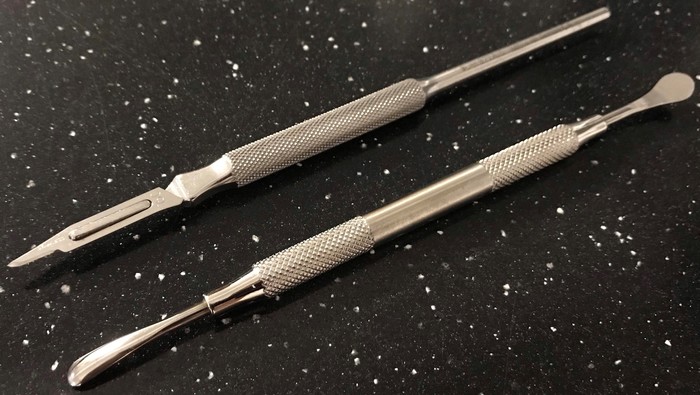
Incision:
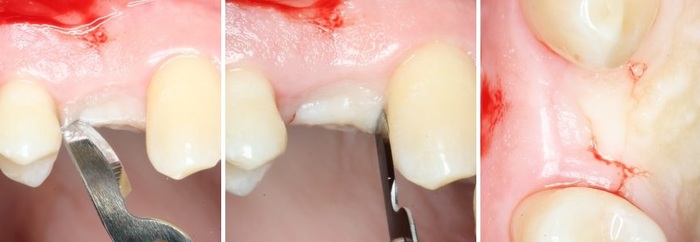
Bone skeletonization:

Next is the preparation of the wells under the implant (preparation).
Below is a set of one of the German implant systems that I use in my practice.
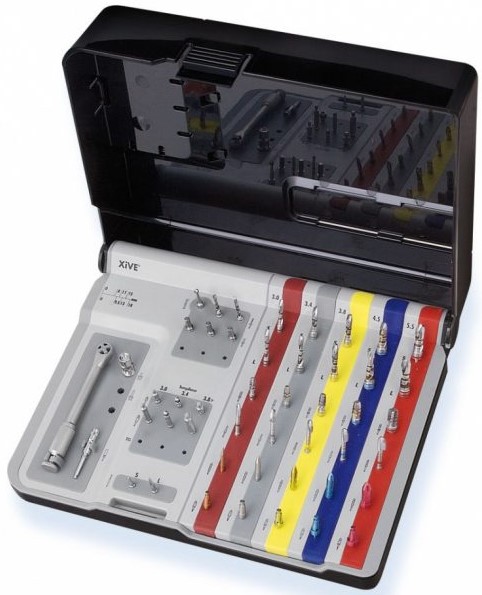
In addition to the surgical kit, we have a special device called a physical dispenser:
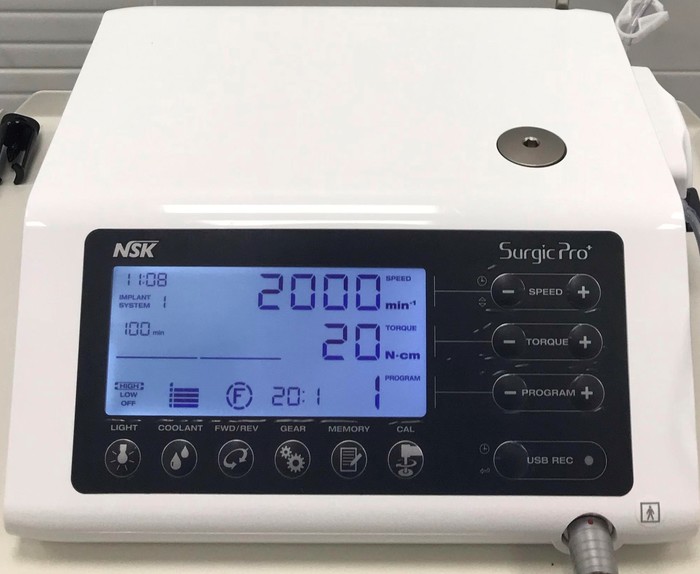
Unlike a conventional dental drill, it not only allows you to precisely adjust the speed and cool the cutting tool with saline, but also to control the torque.
Implantation begins with markup. This is done with the aid of globular boron:

Further, using a pilot cutter with a diameter of 2 mm, the axis of the hole of the future implant is set, which is controlled by pins *
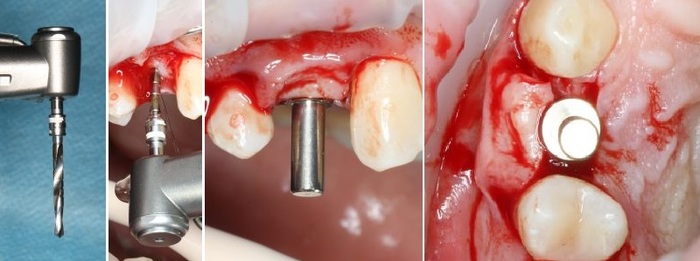
* Gizmo to monitor the position of the implant
Further, since the axis of the hole is set correctly, we can only bring the hole to the desired diameter. To do this, use the main working cutters. The first one is with a diameter of 3.0 mm:
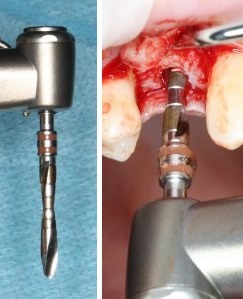
After that - position control with the help of the implants included in the set:
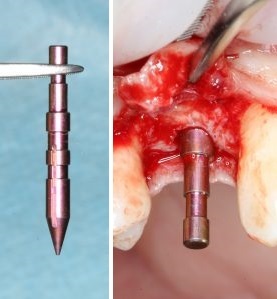
Next in turn is the following milling cutter, with a diameter of 3.4 mm:

And now the most crucial stage is next - the finishing mill for our implant with a diameter of 3.8 mm. Now we reduce the speed on the physical dispenser to a minimum in order to avoid overheating and injury to the bone tissue, after which we go through the hole very, very carefully:
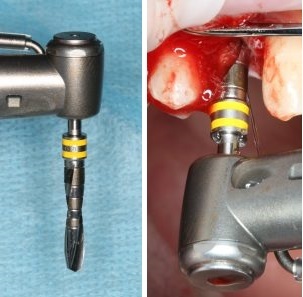
Once again we check everything with the help of analogs of the implant. As they say, measure seven times, one stick:
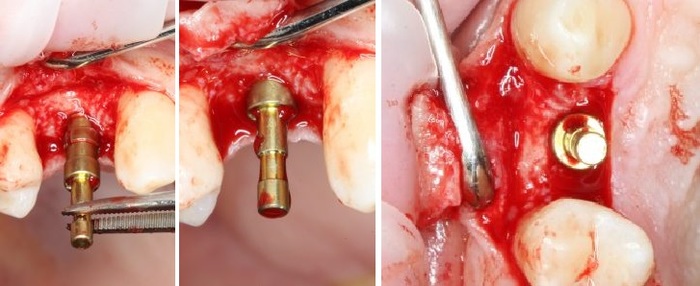
We brought the hole to a depth of 11 mm and a diameter of 3.8 mm. But the preparation of the hole does not end there.
And all because the bone tissue is an elastic medium, and to relieve stress from the cortical plate (and prevent periimplantitis), we use a special cortical cutter:
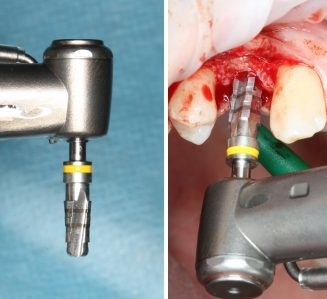
When working with very dense bone tissue, we additionally use a special tap:
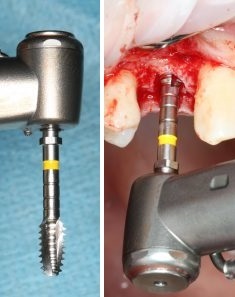
Now you can begin to install the implant.
The implant of the desired size (3.8x11 mm) is fixed on the hexagonal key, after which it is placed in the prepared well:
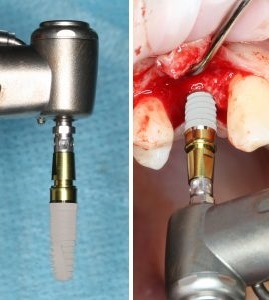
Check the position of the implant again:
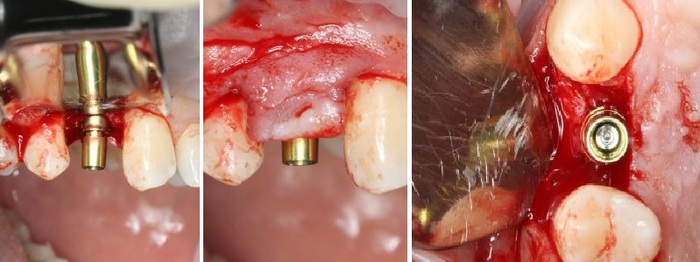
Next, we remove the temporary abutment, which in this case served as an implant holder:
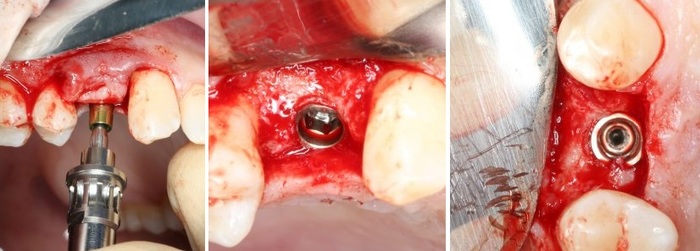
The next step is to install the gum former:
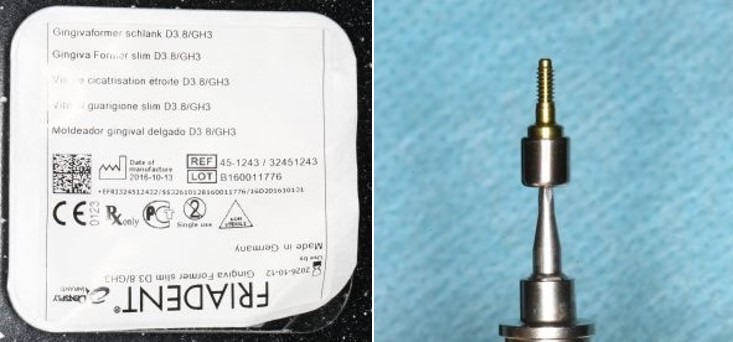
Taking into account the clinical conditions, we picked up Slim (without extensions) with a height of 3 mm to the established implant:
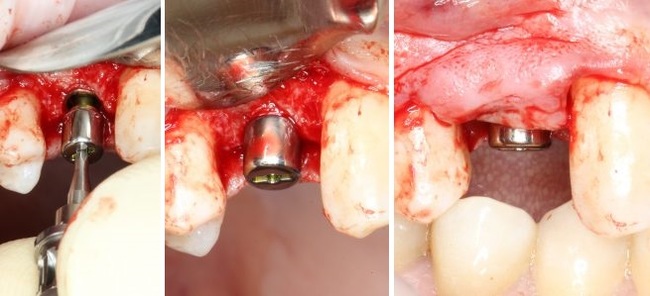
We finish our operation by stitching:
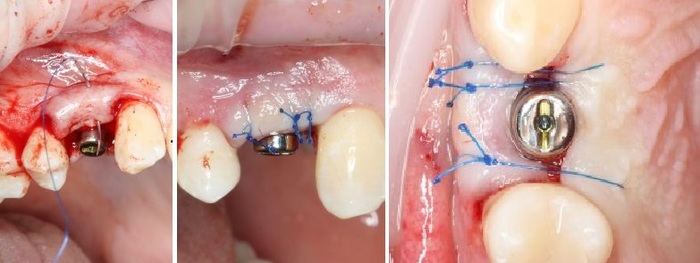
And a control picture:
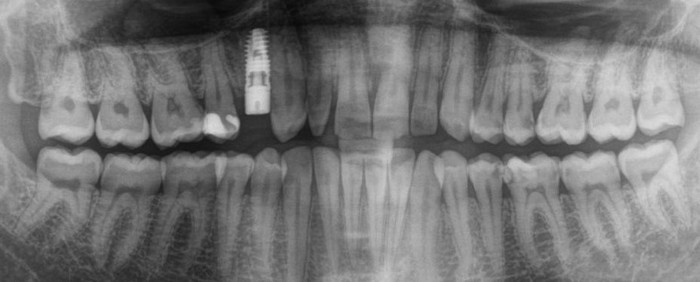
On the implant integration takes, on average, 4 months. At the same time, the formation of soft tissues is in progress, so after about 12 weeks we will get a system ready for the crown to be installed.
It's all for today.
Thanks for attention!
Sincerely, Andrei Dashkov
What else to read about the implantation of teeth?
- Sinus lifting and simultaneous implantation
Source: https://habr.com/ru/post/459140/
All Articles